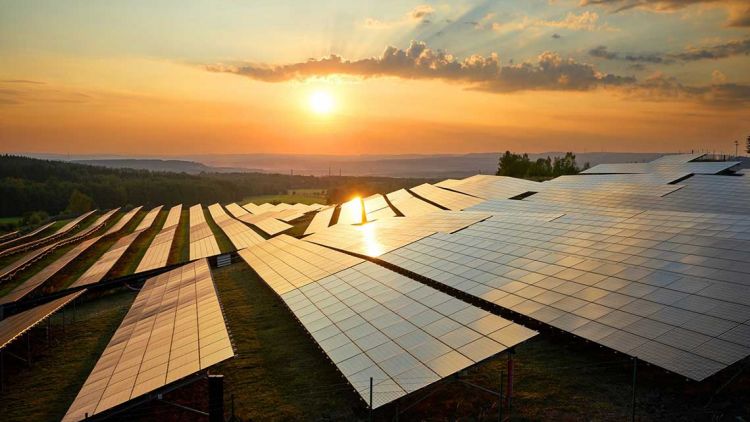
The EU has saved €12 billion in gas costs thanks to the accelerated solar and wind growth since Russia’s invasion of Ukraine in 2022, according to an analysis from climate and energy think tank Ember.
Solar and wind have accounted for 23% of total EU generation since the war began. This figure overtook the share of gas power (19%) for the first time. Ember said the record solar and wind generation helped the EU “weather challenging conditions” in the power section.
Try Premium for just $1
- Full premium access for the first month at only $1
- Converts to an annual rate after 30 days unless cancelled
- Cancel anytime during the trial period
Premium Benefits
- Expert industry analysis and interviews
- Digital access to PV Tech Power journal
- Exclusive event discounts
Or get the full Premium subscription right away
Or continue reading this article for free
Growing capacity and favourable weather conditions contributed to the surge in solar and wind adoption. Their combined generation was 546TWh, an increase of 50TWh or 10% compared to the same period in 2021-22. This amount reduced the gas required for electricity generation by 90TWh and avoided gas costs of €12 billion.
On the other hand, without the total 546TWh solar and wind generation, the EU could have required an additional 993TWh of gas to meet electricity demand, equivalent to gas costs of €135 billion.
Gas prices surged to €313/MWh as Russia cut pipeline exports to the EU, causing the cost of producing power from gas to reach over €650/MWh. In addition to replacing Russian gas, nuclear and hydro generation suffered significant shortfalls across the EU in the wake of drought impacts and plant closures.
The situation created a gap in power generation much of which was met by solar and wind, while a fall in demand also took place as fossil fuel prices soared.
The EU decided to use more clean energy as it identified fossil fuels as a potential threat to national security, energy affordability and climate goals. Its REPowerEU proposal aims to double solar capacity by 2025 under its 45% renewable energy target for 2030.






